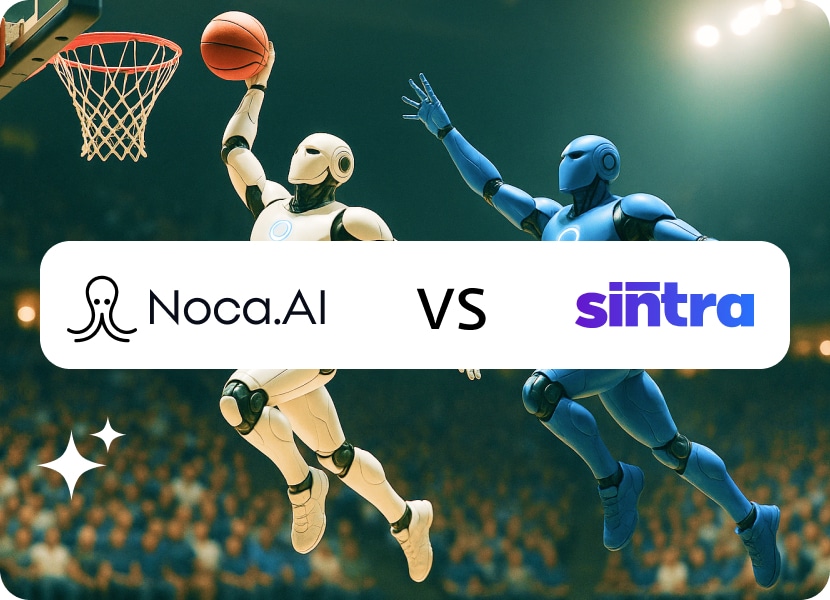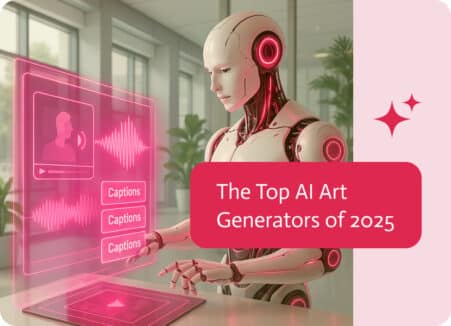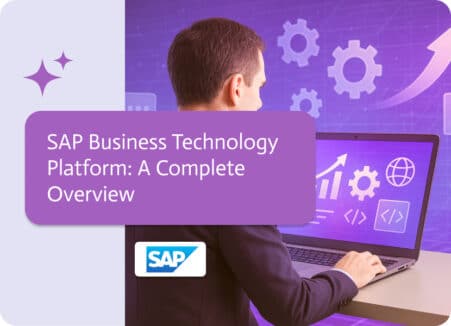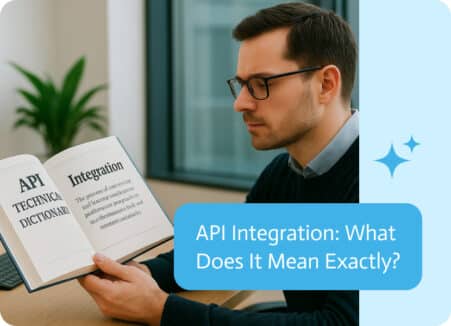

Noca vs. Sintra AI: Digital Employee Deployment
Digital employees are workers with AI brains that actually do work rather than just assist with it, and they’re quickly morphing from sci-fi fantasy to business reality. Two AI agents platform at the forefront of pioneering this space are Noca vs. Sintra AI, both promising to give you a virtual workforce that never calls in sick, never complains about the office temperature, and definitely won’t steal your lunch from the communal fridge.
But here’s the million-dollar question: which platform should you trust with your business’s future? Let’s take a closer look at these digital employee specialists and figure it out.
What Are We Even Talking About?
Before we start comparing these platforms, let’s make sure we’re all talking about the same thing and be clear on what “digital employees” actually means in 2025.
We’re not talking about chatbots that answer FAQs or robotic scripts that move data from point A to point B. AI employees are autonomous workers capable of overseeing entire workflows end-to-end. They log into systems, reason through complicated steps, make choices, interact with customers, and confirm task completion, all without human hand-holding.
They’re digital colleagues who can process loan applications, coordinate patient care, manage freight logistics, or handle customer support from start to finish. They’re like the super-smart, super-efficient next step up from basic or rudimentary automation, representing how agents grow up and get real jobs.
Both Noca and Sintra operate in this space, but they’re tackling the problem in very different ways.
Noca vs. Sintra AI Overview
Noca AI: The Enterprise Orchestration Platform
Noca AI is an enterprise-grade AI orchestration platform built for organizations and companies that use serious enterprise software: Salesforce, SAP, NetSuite, Priority ERP, Microsoft Dynamics, and the whole alphabet soup of business systems that keep large companies running.
The proverbial feather in their cap feature is the impressive AI agent platform Builder, which lets you design custom digital employees with bidirectional integrations into virtually any enterprise system. You describe what you need in plain English, hit deploy, and watch your new digital employee spring to life. This is “vibe coding” for business processes.
Noca doesn’t skimp when it comes to security, with ISO 27001 certification, SOC 2 compliance, and multi-region deployment capabilities to ensure you adhere to compliance requirements. Their pricing uses a tiered model (Free, Starter, Growth, Scale) with usage-based scaling, making sense for bigger companies with more complex integration requirements, as well as solopreneurs or very small businesses.
Sintra AI: The Accessible Alternative
If Noca is the enterprise battleship, Sintra is the nimble speedboat. Sintra’s mission is radically different: make digital employees fun and easy for non-technical business owners that may find modern AI tools intimidating.
Their tagline says it all: “Your employees, on AI.” Sintra gives you 12 specialized AI “helpers,” and they all have a name, a personality, and a role, who work alongside your human team to handle everything from customer support to management of your socials.
What Makes Sintra Different?
Sintra’s onboarding feels like playing a business simulation game. You meet colorful character-based AI helpers like Buddy the Business Development Manager, Cassie the Customer Support Specialist, and Emmie the Email Marketing Expert, who introduce themselves, ask about your business, and start suggesting what they can deal with immediately.
This approachability is intentional. Sintra targets business owners who tend to be overwhelmed by LLMs or complex automation tools. They’ve designed the whole UI to feel friendly, with helpers that literally toast to milestones with you and occasionally crack jokes.
The 12 Helpers
Each Sintra helper is focused on one aspect of business function:
- Buddy (Business Development): Crafts growth strategies, analyzes competitors, generates business ideas
- Cassie (Customer Support): Handles email responses, live chat, socials comments, creates product manuals
- Emmie (Email Marketing): Creates welcome sequences, cart abandonment flows, win-back campaigns
- Soshie (Social Media Manager): Generates content, plans strategies, schedules posts on all your platforms
- Scouty (Recruiter): Screens resumes, crafts job postings, manages onboarding processes
- Seomi (SEO Specialist): Optimizes content, audits website SEO, writes SEO-friendly blog posts
- Dexter (Data Analyst): tracks market trends, generates reports, provides insights
- Gigi (Personal Assistant): Creates meal plans, workout routines, personal goal tracking
Plus several others covering copywriting, content creation, sales, and research functions. But, just a quick FYI, you can create a digital employee with Noca that does all of these things in a few, well-constructed sentences.
Sintra’s “Brain AI” seems to be its so-called secret weapon, a centralized knowledge hub that stores your documents, brand guidelines, web pages, and business information. All digital employees can access this Brain, which basically means they learn about your business, then apply that knowledge across every interaction.
Upload your brand guidelines, and suddenly every helper writes in your tone. Add research options on your competition, and your strategy helpers incorporate that intelligence into their recommendations. This transforms generic AI outputs into genuinely personalized business advice.
90+ Power-Ups
Beyond the core helpers, Sintra offers over 90 specialized “Power-Ups,” they say are one-click tools for individual jobs like brand name generators, SEO auditors, product description writers, financial report generators, budget planners, FAQ creators, and image upscalers. These power-ups extend functionality while keeping things pretty simple, offering specialized features when needed.
Real-World Impact
Sintra users say they’re saving time and getting more done:
- Saving 2-4 hours a day on planning and creating content
- Faster outreach to clients with tailored messages
- Better consistency across your channels
- Reduced no-shows in service-based businesses through automated reminders
One case study worth mentioning features a mom who used Sintra to build a basic digital tutor for her dyslexic son, demonstrating the platform’s flexibility for non-traditional use cases.
The Pricing Reality
Sintra keeps pricing refreshingly simple:
- Individual Helper: $39/month for access to one specialized AI helper
- Sintra X Bundle: $97/month for all 12 helpers plus full access to power-ups and Brain AI features
Annual billing offers 50% savings on both plans, and there’s a 14-day money-back guarantee, but it must be said that there is no traditional free trial. (Like you’ll get with Noca)
Unlike credit-based systems, Sintra offers unlimited usage for your plan tier. However, team collaboration gets expensive fast, as each additional user adds linearly to your costs with no pooled usage sharing.
Noca vs. Sintra AI: Head-to-Head
Target Audience
Noca is built for mid-to-large enterprises that have or need complex system integrations, organizations using multiple enterprise software platforms, and IT teams managing business processes requiring serious security, compliance, and audit trails.
Sintra is built for one-man teams and very small entities (targeting those making under $100K/month), non-technical users, and content creators, coaches, consultants, and service providers wanting a simple introduction to business assisted with AI.
Technical Complexity
Noca embraces complexity because that’s what enterprise workflows demand. While they’ve abstracted much of the technical detail behind English prompts, you’re still dealing with multi-system integrations, data flows, and business logic. Although it certainly doesn’t require as much technical literacy, if any, to orchestrate effectively as many other builders. Everything can be performed, built, scaled, and continuously managed and optimized with simple prompts.
Sintra actively hides complexity. The gamified interface, character-based helpers, and building with conversation or configuring software are more like talking with colleagues. There’s no workflow builder, no connector configuration, just conversations with specialized digital employees.
Noca vs. Sintra AI: Integration Depth
Noca offers deep, bidirectional integrations with enterprise systems. Their digital employees manage databases, trigger processes in ERPs, amend CRM records, and orchestrate incredibly complicated multi-system procedures with real-time data sync and adaptive workflows.
Sintra offers lighter-touch integrations focused on common productivity tools: Gmail, Outlook, Google Calendar, Facebook, LinkedIn, Instagram, Notion, and similar tools. They enable the digital employees/helpers to send emails, schedule things, and access documents, but they’re not orchestrating complex enterprise workflows.
Customization vs. Accessibility
Noca wins on customization. You can build completely custom digital employees tailored perfectly to processes, with unique decision logic, conditional flows, and integration patterns.
Sintra wins on accessibility. You don’t build custom digital employees, you work with pre-built helpers designed by experts in their particular field. While you can’t create a helper from scratch, the existing helpers cover a range of small business functions, and Brain AI provides substantial personalization within those roles.
Noca vs. Sintra AI: Security and Compliance
Built for sectors with stringent regulatory requirements, Noca offers enterprise-grade security with ISO 27001 certification, SOC 2 compliance, GDPR readiness, permission-based access controls, traceability, and data encryption.
Sintra handles security responsibly but doesn’t emphasize compliance certifications as a core selling point. Their security is probably adequate for small businesses with minimal regulatory requirements. It might not meet procurement requirements for highly controlled fields.
Noca vs. Sintra AI: Which Should You Choose?
Choose Noca If:
- You’re a mid-to-large enterprise with complex integration needs
- You use multiple enterprise software platforms (Salesforce, SAP, NetSuite, etc.)
- You need serious security, compliance, and audit capabilities
- You want to build custom digital employees for specific, complex business processes
- Your digital employees need to orchestrate across multiple systems with real-time adaptation
- Technical complexity intimidates you and you prefer conversational interfaces
Choose Sintra If:
- You’re a solopreneur, freelancer, or very small business owner
- You want an approachable, fun pathway to AI business assistance
- You need help with common small business functions (content, marketing, customer support)
- You work primarily with standard productivity tools rather than enterprise software
- You’re comfortable working within pre-built helper frameworks instead of needing fully custom solutions
Noca vs. Sintra AI: The Digital Employee Revolution Is Here
Here’s the uncomfortable truth: digital employees aren’t simply dreams anymore, they’re already here, and they’re getting better fast. Within the next few years, nearly every business will employ some form of digital employee handling all sorts of work, not just assisting humans. AI bots, for instance, can manage repetitive tasks, answer questions, and even interact with systems just like a human would, making them an essential part of modern workflows. The question isn’t whether to adopt digital employees, but which platform fits your organization’s reality.
If you’re running a 5,000-person organization with complex ERP systems, Sintra’s character-based helpers would feel like bringing a butter knife to a gunfight. Conversely, if you’re a one-person coaching business, Noca’s enterprise integrations would be massive overkill for your needs.
The beautiful thing about this is that for the first time, digital employees are accessible to virtually any size business. Whether you need a charming AI helper named Cassie for basic customer support emails or a sophisticated digital employee orchestrating global logistics across multiple enterprise systems, Noca makes it possible to go from idea to fully functional prompt-to-app in minutes.


